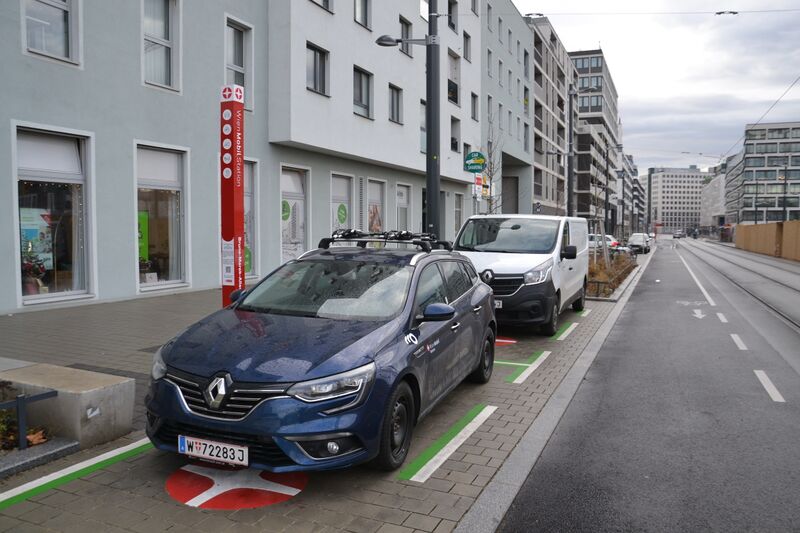
housing-based, decentralized hub, with carsharing, bikesharing and PT nearby
Mobility Hub in new urban area, with an audience with a very high sharing affinity . Car sharing vehicles are located in public space, other vehicles (bikes, cargo bikes,..) are located on a semi- private location. Station is owned by Wiener Linien (public transport operator) but operated by MO.Point (private sharing operator for all kind of vehicles)
Reservation and booking only through the MO.Point App (App of Operator), public transport only via WienMobil App. Information about vehicles in printed and digital version. Information in word and pictogramms- easy to understand the usage. Intuitive reservation and booking process.
24h service hotline availableBike parking, PT stop (quite distant),
local
brownfield development in central location, middle - high income inhabitants in surrounding area, 49 - 271 cars / 1000 inhabitants
Governance
1,900,000 in 2021
1,900,000 in 2021
The City Government of Vienna
- governance with 7 departments; each divided into multiple municipal authorities
Local Administration:
- Mayor: Michael Ludwig (SPÖ)
- Parliament president since 2018: Ernst Woller
- Deputy Mayor and Deputy Governor, Executive City Councillor for Housing, Housing Construction, Urban Renewal and Women's Issues: Kathrin Gaal
- Executive City Councillor for Innovation, Urban Planning and Mobility: Ulli Sima
- Executive City Councillor for Climate, Environment, Democracy and Personnel: Jürgen Czernohorszky
Vienna Provincial Government (100 members)
+ Vienna Provincial Parliament (Governor + currently 12 City Councilors)By the Office of the Provincial Government under the direction of the Head of the Office of the Provincial Government
Austrian Federal Government (Cabinet, Ministers and State Secretaries, Federal Ministries)
Administration: The Cabinet (passes bills)
basis: Sustainable Development Goals